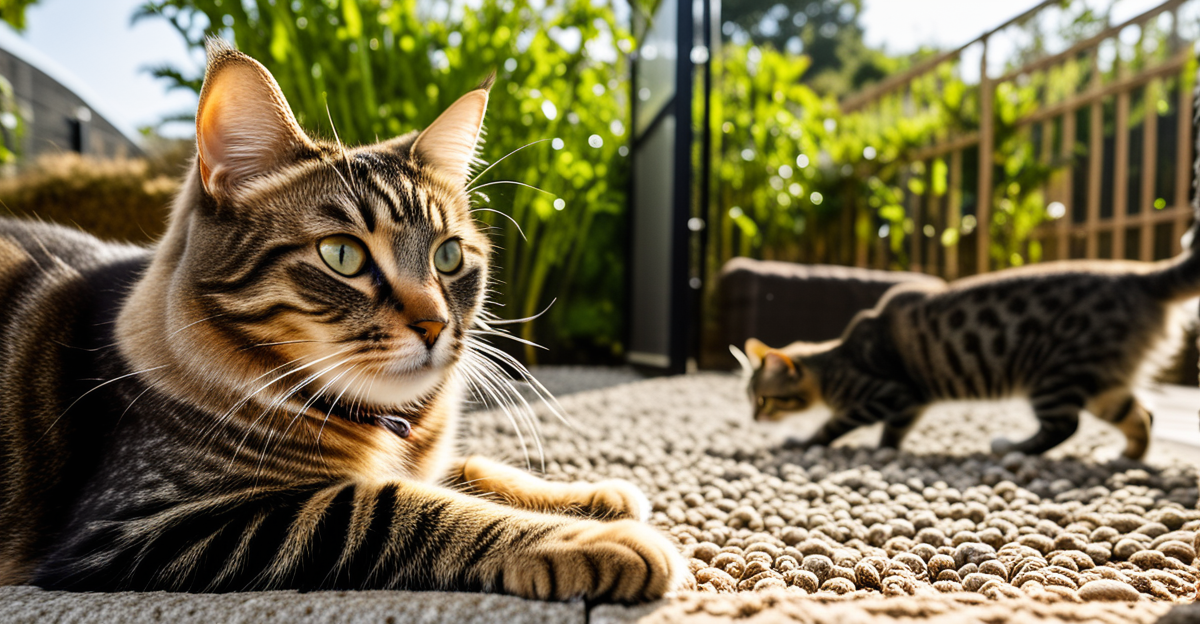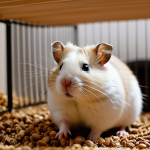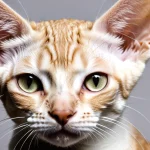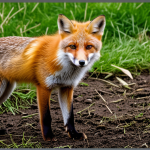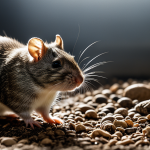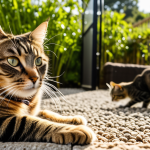Understanding the Needs of Visually Impaired Cats
Cats with visual impairments still possess a vibrant sensory world, heavily relying on other senses. Their unique sensory needs demand careful attention to ensure a secure and engaging environment. While a visually impaired cat may not see obstacles, it can navigate effectively through enhanced auditory, tactile, and olfactory inputs.
Safety remains paramount. In a sensory-rich environment, it is crucial to remove potential hazards like sharp objects or small choking risks, ensuring areas are well-defined and navigable. This makes it more comforting and easier for the cat to explore without fear of causing themselves harm.
Sujet a lire : Detecting Cat Heat Exhaustion: Essential Prevention Strategies for Caring Pet Owners
Visual impairment also impacts a cat’s natural exploration instincts and comfort levels. With the loss of sight, these cats become more attuned to their other senses, crafting a need for well-thought-out sensory pathways. By understanding and catering to their sensory needs, we can transform their living spaces into secure havens which foster confidence and facilitate safe exploration. Understanding these nuances not only enhances the quality of life for visually impaired cats but also reinforces their bond with their environment and human companions.
Designing Safe Outdoor Spaces
Creating a secure environment for visually impaired cats to explore outdoors adds depth to their sensory experiences and enhances their quality of life. A well-designed outdoor cat enclosure should protect against potential hazards. Materials such as wire mesh or plexiglass provide sturdiness without obstructing airflow, ensuring safety while keeping the area well-ventilated.
A lire en complément : Comprehensive Devon Rex Grooming Manual: Expert Tips to Care for Their Special Coat
To further bolster outdoor cat safety, consider installing escape-proof fencing. Sloped or curved tops deter climbing escapes, while ensuring all gaps are sealed to prevent unwanted exits. Incorporating buffers like bushes or soft barriers adds layers of protection, reducing the risk of accidental injuries during exploration.
Designing psychologically comforting spaces involves creating varied landscapes featuring safe zones. For instance, wooden platforms and ramps allow elevations for safe climbing, while cozy igloo beds offer rest areas, promoting mental calmness.
Incorporating sensory elements like gentle wind chimes or rustling leaves can simultaneously engage and maintain interest. By meticulously planning these elements, outdoor spaces become not only safe but inviting for exploration, catering specifically to the enriched sensory worlds of visually impaired cats. Such thoughtful designs support their peace and joy during outdoor adventures.
Sensory Stimulation Elements
Visually impaired cats experience the world through textures, scents, and sounds, which are crucial for their engagement and well-being.
Textures for Exploration
Incorporating varied textures in a cat’s environment is essential for tactile stimulation. Textured pathways, like roughened mats or fabric strips, can guide exploration and offer security. Play areas can benefit from diverse materials such as sisal, which mimics natural surfaces, encouraging natural behaviors like scratching. Case studies show that environments rich in texture positively impact a cat’s behavior, as they provide familiar landmarks.
Utilizing Scents
Scent trails act as invisible pathways for visually impaired cats. Introducing safe aromatic plants such as catnip or mint creates a stimulating environment. Materials like scented wood chips or fabric infused with safe oils encourage exploration and comfort. Readers have suggested different scent-focused enrichment ideas, layering various scents to maintain ongoing interest.
Sounds That Encourage Interaction
Crafting an auditory-rich environment is vital. Creating varied soundscapes with gentle wind chimes or soft bells attracts visually impaired cats, encouraging them to interact. Experts recommend using natural sounds, like rustling leaves, to create inviting spaces. Varying sound elements maintains stimulation and intrigue, facilitating a dynamic and engaging environment for exploration.
Enrichment Activities and Challenges
Engaging visually impaired cats with appropriate cat enrichment activities is essential for their mental and physical well-being. These activities not only stimulate their other senses but also provide opportunities for interactive activities that can be both fun and educational.
Start with simple exercises that encourage safe exploration. Consider designing interactive toys such as moving fabric tunnels that crinkle when touched, stimulating the cat’s auditory senses and promoting curiosity. Incorporating small, scented balls or toys with hidden treats can encourage the use of scents for exploration.
When introducing challenges, ensure they are safe yet intriguing. Puzzle feeders, for instance, can be an excellent tool for mentally stimulating cats; they must use their heightened sense of smell and touch to access food. Interactive fixtures like textured scratching posts provide both recreational activity and tactile engagement.
To maximize these activities, aim for a gradual introduction. Begin with one or two elements to gauge interest and adjust based on your cat’s preferences. Through tailored enrichment activities, we support visually impaired cats in developing their skills and confidence within their living environments, enriching their lives significantly.
Practical Tips for Implementation
Creating a sensory oasis for visually impaired cats requires detailed planning and thoughtful execution. Here’s a step-by-step guide to help you get started:
-
Gather Recommended Materials: Choose safe and durable supplies such as plexiglass and wire mesh for enclosures. These provide protection while ensuring airflow. Opt for natural materials like sisal and soft grass patches which are engaging and safe underfoot.
-
Outdoor Setup Tips: Design secure spaces with robust fencing—preferably with sloped tops to prevent climbing. Ensure all fencing sections have no gaps to eliminate escape risks. Adding bushes or soft barriers along the edges contributes to a secure environment.
-
DIY Projects: Incorporate sensory elements like textured pathways using patterned tiles or fabric strips that enhance tactile engagement. Build ramps and platforms with varying heights to encourage exploration, taking inspiration from case studies demonstrating their effectiveness.
-
Safety Checks and Ongoing Maintenance: Regularly inspect for potential hazards like sharp edges or loose elements. Consistently update scents and sounds in the environment to keep it engaging. Through careful monitoring and periodic updates, you ensure a safe and stimulating environment for your cat.
Case Studies and Expert Insights
Real-world scenarios provide valuable insights into creating effective sensory environments for visually impaired cats. Case studies often highlight successful transformations, showcasing environments that cater to these cats’ unique needs. For instance, many environments combine tactile, auditory, and olfactory elements to craft an engaging and relaxing space, leading to enhanced mobility and reduced stress in cats.
Veterinary professionals and animal behaviorists offer crucial expert advice ensuring these implementations are not only innovative but also scientifically sound. Their guidance emphasises the importance of adapting spaces to meet each cat’s distinct needs, encouraging proactive adjustments based on individual reactions.
A key lesson from these implementations is that every cat responds differently to sensory elements. Successful designs consider these responses, allowing for adjustments over time. By observing these cases, cat owners and caregivers can learn strategies to create enriched environments that boost confidence and curiosity in visually impaired cats.
Implementation successes underscore the importance of regular reviews and updates, ensuring environments evolve to remain stimulating and safe. Overall, these insights combine to strengthen the support for visually impaired cats, improving their quality of life dramatically.

